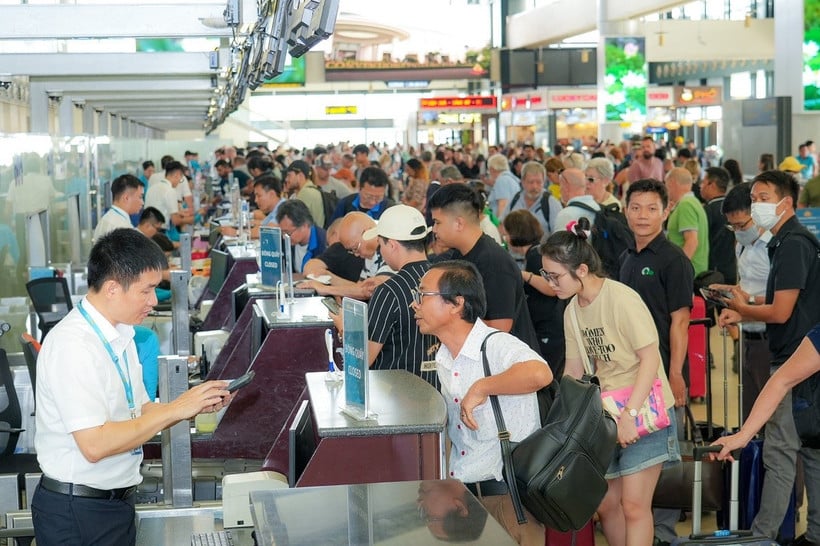 |
| Passengers check in for flights at Noi Bai International Airport. (Photo: PV/Vietnam+) |
The Civil Aviation Authority of Vietnam will deploy many solutions and policies to realize the goal of striving to achieve capacity through airports reaching 300 million passengers by 2030, an increase of 2.5 times compared to 2025.
Rapid growth without accidents
Speaking at the 1st Congress of the Party Committee of the Ministry of Construction (term 2025-2030) on the morning of August 5, according to Mr. Uong Viet Dung, Director of the Civil Aviation Authority of Vietnam, in the period 2015-2019 (before the COVID-19 pandemic), the Vietnamese aviation transport market had high and continuous growth with an average growth rate of 14.3% in passengers and 10% in cargo.
In particular, at the "peak" of 2019, the total Vietnamese air transport market reached 79 million passengers, an increase of 13.1% compared to 2018 and 1.25 million tons of cargo, an increase of 3.3% compared to 2018, an increase of 2 times in passengers and 1.6 times in cargo compared to 2015.
During the 2020-2022 period, Vietnam's air transport was severely affected by the COVID-19 pandemic. The air transport market declined sharply, by 19.6% compared to 2019.
From 2023 to now, with many support policies and timely removal of difficulties by the Government , the market has gradually recovered and developed strongly. It is expected that by the end of 2025, the transport output will reach 84.1 million passengers and 1.4 million tons of cargo, an increase of 6.3% in passengers and 7.6% in cargo compared to 2019.
Over the past 5 years, 5 new Vietnamese airlines have entered the market (Bamboo Airways, Vietravel Airlines, BlueSky Airways, Sun Air, Sun Phu Quoc Airways 2025), bringing the total number of Vietnamese airlines to 13, contributing to increased competition, expanding services and better meeting domestic air transport needs.
The commercial fleet has also grown strongly, from 134 aircraft in 2015 to 254 aircraft in 2024, with modern aircraft such as Boeing 787, Airbus A350, A321, Falcon, Gulfstream, Agusta... The flight network has been expanded with 52 domestic routes and 211 international routes.
During this period, Mr. Dung said that many projects have been invested, upgraded and completed and put into operation such as: building a new Van Don international airport using the public-private partnership (PPP) method; upgrading and expanding international airports Noi Bai, Tan Son Nhat, Da Nang, Dien Bien, Phu Bai, Cat Bi, Quang Tri, Binh Thuan, Long Thanh International Airport phase 1, Gia Binh, Phu Quoc...; researching the formation of Van Phong, Mang Den, Ninh Binh airports...
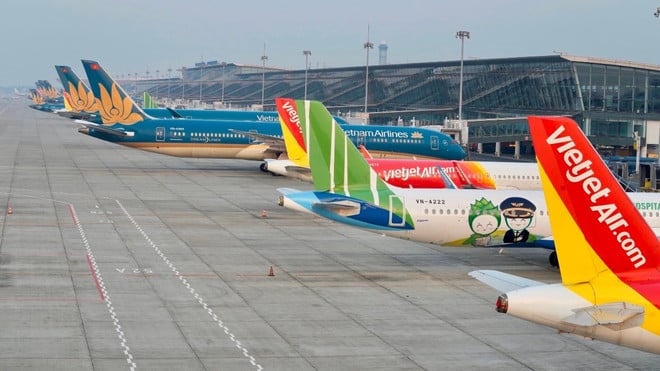 |
| Vietnamese airlines have increased both the size of their fleets and the number of aircraft to develop. (Photo: PV/Vietnam+) |
“Basically, the system of airports has met the growth rate of the aviation industry, contributing positively to the socio-economic development of localities and the whole country; implementing regional and international linkages,” Mr. Dung assessed.
Emphasizing that state management of aviation safety is always focused on and given top priority, in 2024, the International Civil Aviation Organization (ICAO) conducted a comprehensive inspection of the Civil Aviation Authority of Vietnam, with the average performance index of Vietnam reaching over 78%, which is higher than the ICAO target for the Global Aviation Safety Program (75%).
“In the past 30 years, the Vietnamese civil aviation industry has had no accidents, and the service of charter flights has been absolutely safe and secure,” affirmed the Director of the Civil Aviation Authority of Vietnam.
There are major air hubs
However, the Civil Aviation Authority also pointed out the limitations and shortcomings of institutions and policies in the field of civil aviation that are still slow to innovate, lacking breakthroughs and failing to meet the needs of socio-economic development in general and the aviation industry in particular; planning and investment in upgrading and developing existing aviation infrastructure are still not synchronous... the connection of aviation with other types of transport is still limited, failing to attract many economic sectors to participate in investing, building and developing airport infrastructure.
On the other hand, Vietnamese airlines are small in scale, with limited financial, technological and human resources; they are easily affected by macroeconomic fluctuations, natural disasters and epidemics. Vietnam also faces great competition for destinations from countries in the region such as Thailand, Singapore, Malaysia...
Determined to strive to become a strategic, modern economic sector with regional and international competitiveness. Annual transport market growth rate reaches double digits, among the top in the Asia-Pacific region, the Civil Aviation Authority of Vietnam continues to innovate and perfect institutions and policies for sustainable development.
In particular, the Civil Aviation Authority focuses on completing the amendment of the Law on Civil Aviation of Vietnam and related guiding decrees; ensuring a clear and transparent legal corridor, creating favorable conditions for all economic sectors to participate in investment and business in airports; at the same time, thoroughly decentralizing and delegating power to localities in managing and organizing investment in developing aviation infrastructure.
In addition to developing modern, synchronous and long-term aviation infrastructure, forming major regional and world aviation transit centers in Hanoi and Ho Chi Minh City, the Civil Aviation Authority sets a goal of striving to achieve a capacity of 300 million passengers through airports by 2030 (2.5 times higher than in 2025), especially forming 2 large-scale, modern international airports with 4 runways (Long Thanh, Gia Binh).
Vietnamese airlines need to develop a modern fleet of over 400 aircraft by 2030, including the formation of airlines specializing in cargo transportation; increase the scale and expand the international flight network, especially transcontinental routes to/from key airports such as Noi Bai, Gia Binh, Da Nang, Cam Ranh, Long Thanh, Tan Son Nhat, Phu Quoc, international routes to new destinations in Europe, North America, the Middle East, Africa, and South America.
The aviation industry also carries out digital transformation, strongly applies advanced science and technology, develops high-quality human resources; develops a synchronous aviation service ecosystem; promotes green and sustainable transformation according to Vietnam's commitment, especially reducing net emissions to zero by 2050..../.
Source: https://huengaynay.vn/kinh-te/luong-khach-qua-cac-cang-hang-khong-san-bay-tang-gap-2-5-lan-vao-nam-2030-156416.html





![[Photo] Cutting hills to make way for people to travel on route 14E that suffered landslides](https://vphoto.vietnam.vn/thumb/1200x675/vietnam/resource/IMAGE/2025/11/08/1762599969318_ndo_br_thiet-ke-chua-co-ten-2025-11-08t154639923-png.webp)


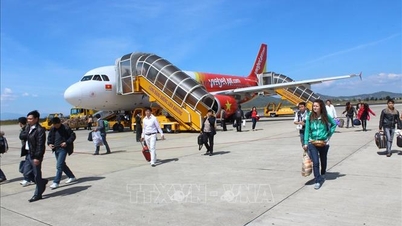

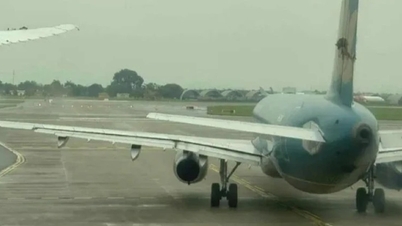

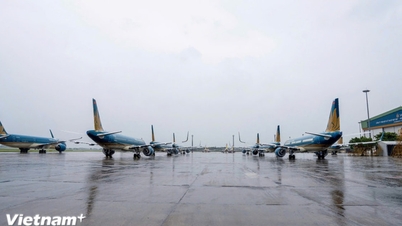



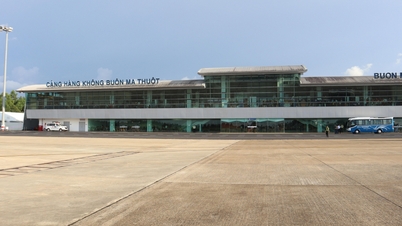



















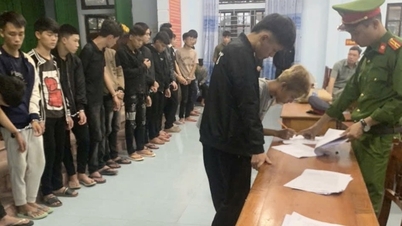











![[Video] Hue Monuments reopen to welcome visitors](https://vphoto.vietnam.vn/thumb/402x226/vietnam/resource/IMAGE/2025/11/05/1762301089171_dung01-05-43-09still013-jpg.webp)




























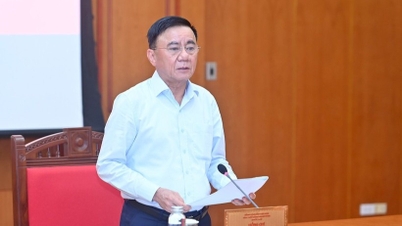









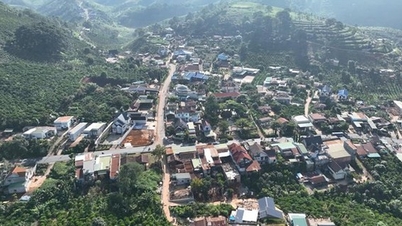



























Comment (0)